 Richard Rieger II
.
January 01, 2024
.
All EV Vehicles
Richard Rieger II
.
January 01, 2024
.
All EV Vehicles
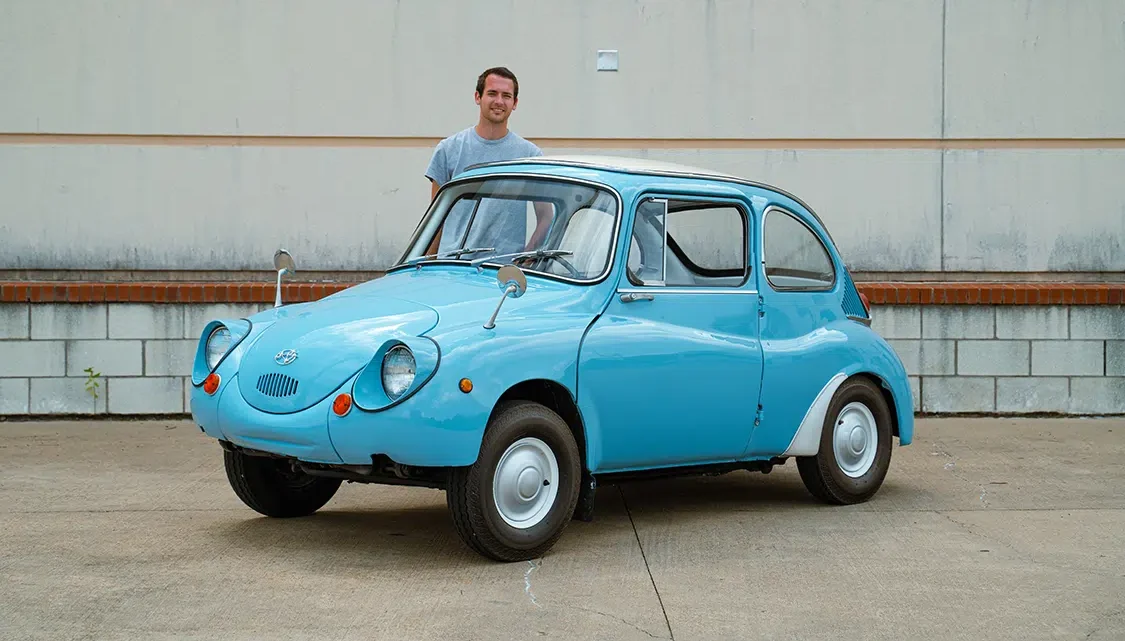
During my time at The Vault, a classic car dealership situated in Jackson, Mississippi, I embarked on my journey with a 1969 Subaru 360. This peculiar car stands out among the array of rare and expensive classics and exotics that graced the shop. As I juggled being a full-time nursing student, my boss, JD Pass, accommodated my schedule, allowing me to work around classes and clinical commitments. This unique flexibility enabled me to nurture my passion for classic cars and mechanics while pursuing my education.

My association with The Vault extended throughout my time in nursing school and continues sporadically to this day, with occasional visits to lend a hand in the shop. Amidst a treasure trove of automotive wonders, the little 1969 Subaru 360 caught my attention. It arrived at the shop with a dormant engine and ineffective brakes. This modest and unassuming car would soon become one of my favorites.
Upon completing nursing school and finding myself with disposable income, an opportunity presented itself on the Facebook Marketplace—a project car, a 1969 Subaru 360, in need of revival. After parting with $1,200 and undertaking a four-hour road trip, the little car became part of my life. At the outset, my intention was to restore the original motor or locate a suitable replacement engine. Yet, the scarcity of hard-to-find components for the original powertrain led me down a different path.
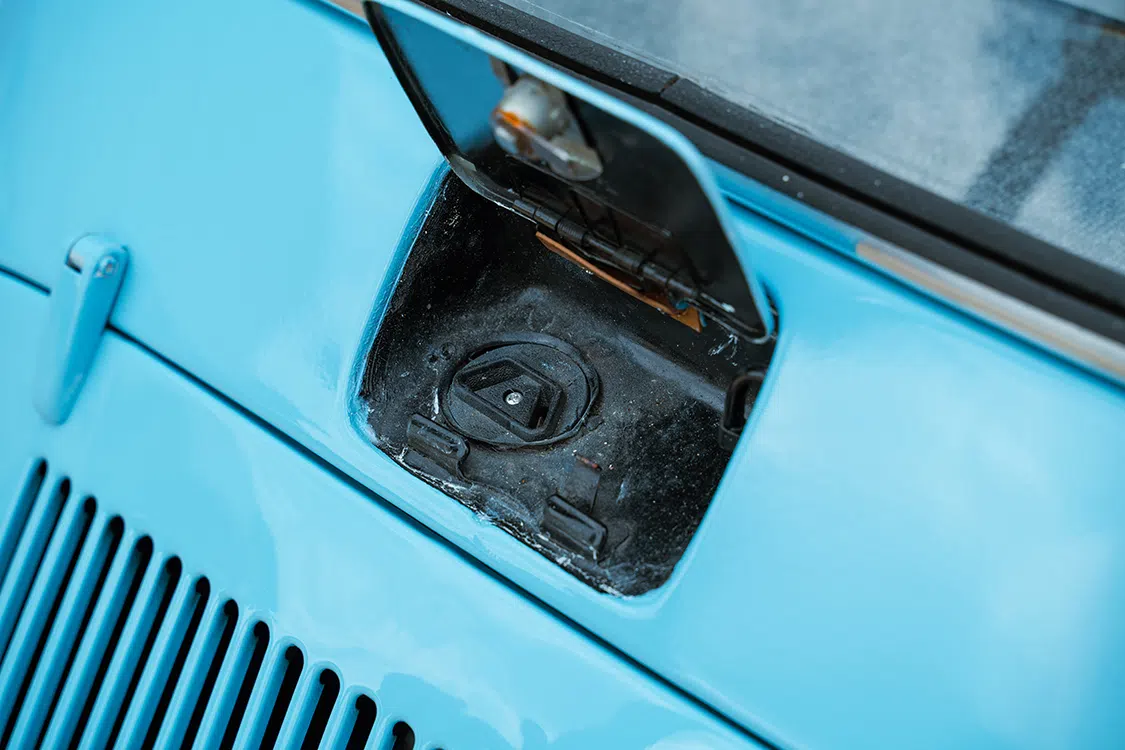
In my Uncle Earl’s workshop, which housed dormant Taylor Dunn and EZGO vehicles, my quest for an alternative solution began. These neglected electric vehicles became my experimental ground. A journey of trial and error ensued, eventually giving rise to what I now refer to as the Electric 360.
The original Subaru 360 engine presented a plethora of issues—missing parts, bent rods, and a piston with a hole, among others. Salvaging the crankshaft bearings and removing the piston rods marked the starting point. The electric motor took the place of the cylinders, connected by a chain to the crankshaft. The motor mounting plate, sourced from the Taylor Dunn, was meticulously aligned with the Subaru block. Custom-made sprockets from Motion Industries in Jackson, Mississippi, upheld a 1:1 ratio between the motor and the crankshaft. A specially crafted bracket supported the electric motor’s weight, occupying the space previously reserved for the cylinders. Retaining the rest of the Subaru drivetrain maintained the car’s original essence.
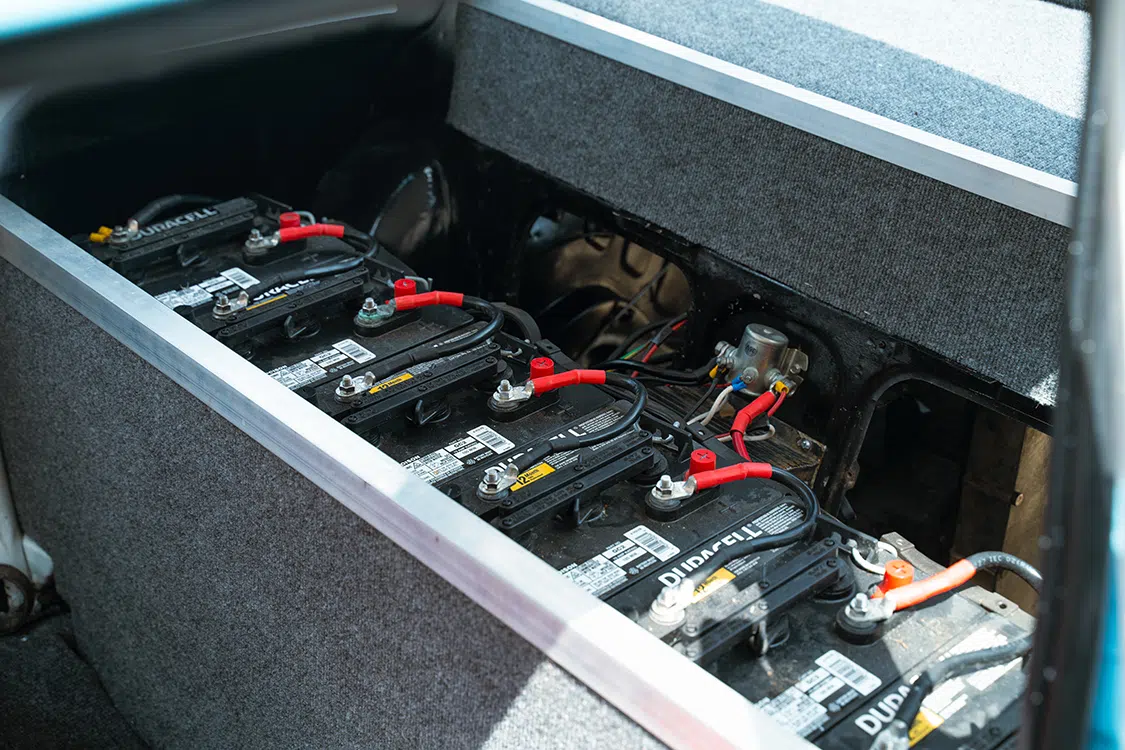
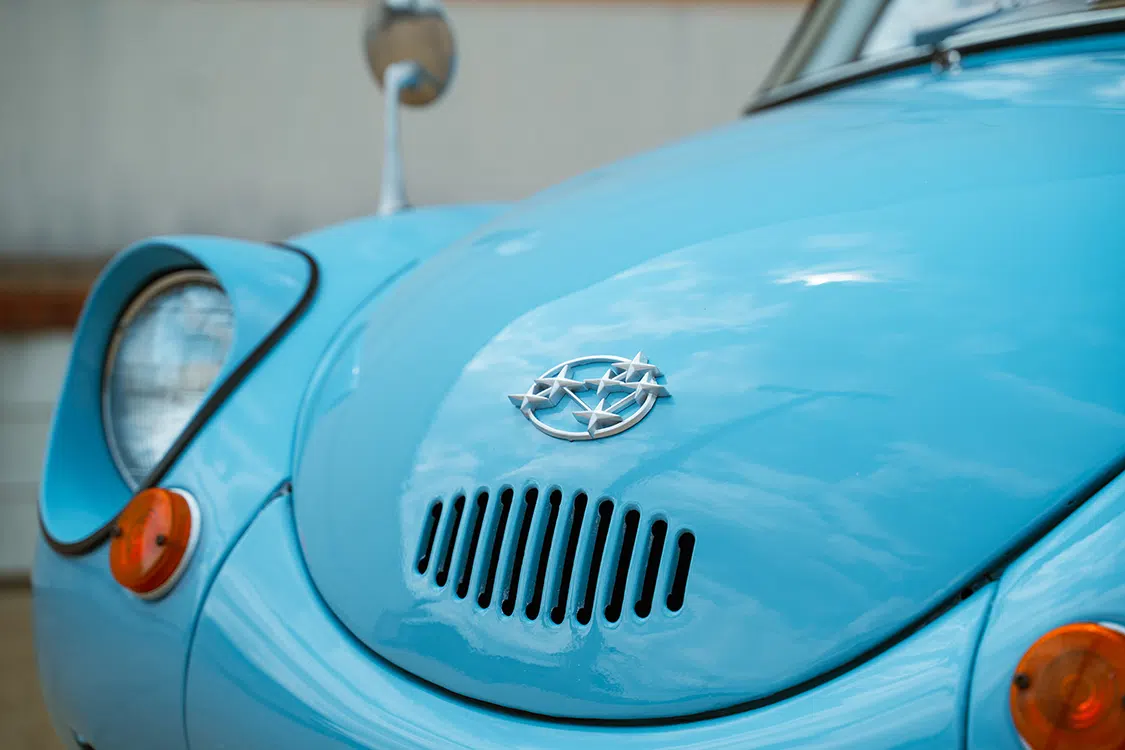
My foray into electrical engineering was aided by rewiring the entire vehicle harness, a task facilitated by my father’s background as an electrical engineer. A 36V to 12V converter powered a fuse block that controlled the lights, signals, and wipers. With the back seat removed, I constructed a frame to house the batteries and essential controls, expertly upholstering a box to conceal them. Sheetmetal repairs and extensive bodywork occupied three years, culminating in a satisfying paintjob. Reassembly proved more straightforward, and the transformed car emerged in all its glory.
Through constant research during the build, I identified potential upgrades for future street legality. While this venture was undoubtedly marked by trial and error, it has shown me the remarkable potential of electric conversions.
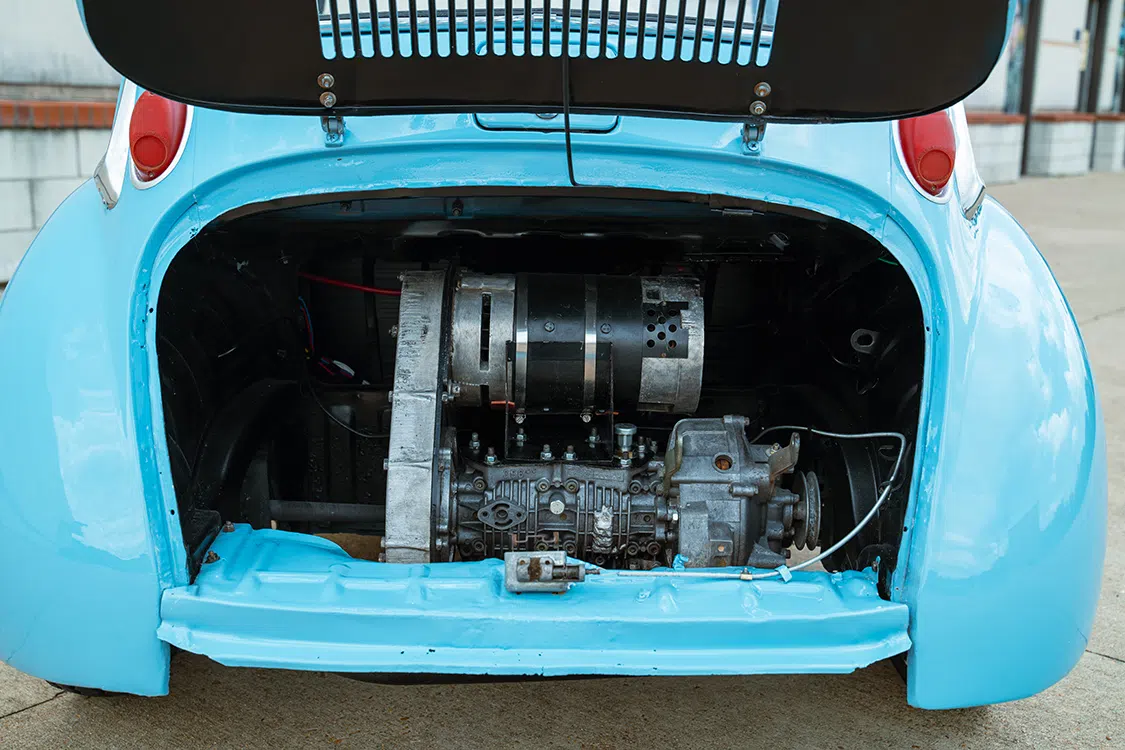
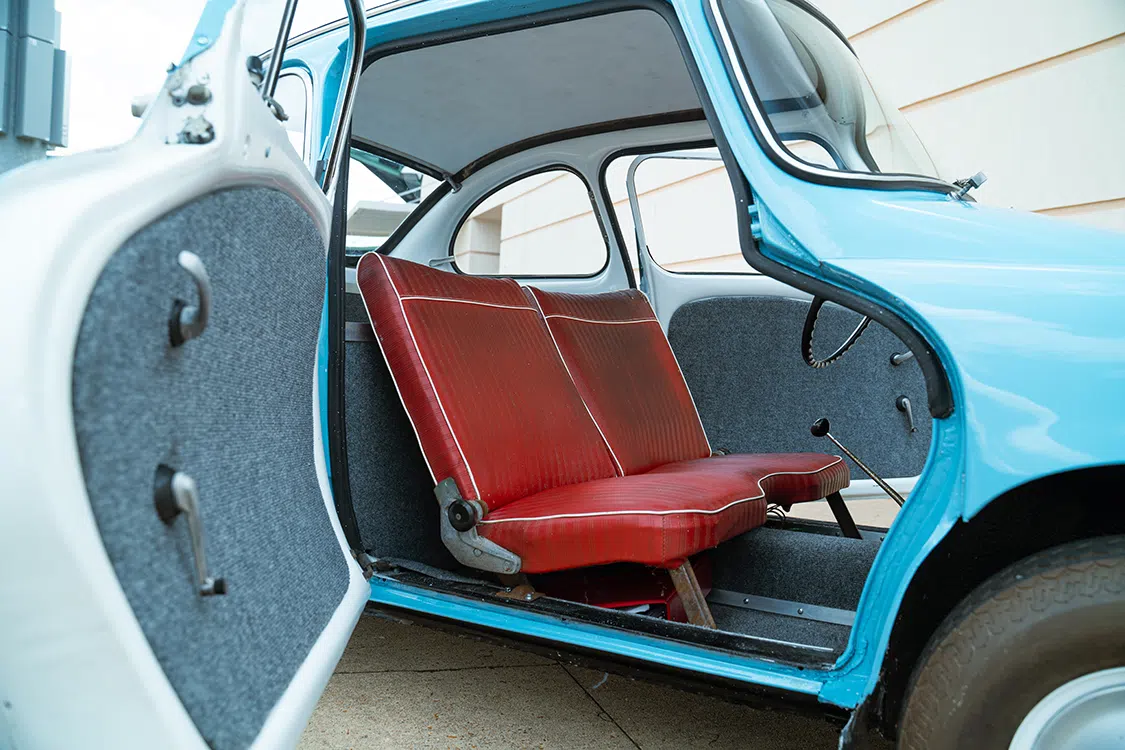
Over the past three years, the car has been showcased as a “work in progress” at numerous local car exhibitions, including the Southlife Car Show in Pearl, Mississippi. The vehicle has garnered a local following due to its unconventional charm and evolving transformation. This weekend, the car will make its debut as a completed project at the same show where it initially captured public attention.
Notably, the car’s presence extended to television, featuring on “Stacy David’s Gearz.” This platform spotlighted the car’s gradual evolution, an inspiration for others to embark on their garage-based projects. My Subaru 360’s potential to encourage others to pursue their automotive dreams is a rewarding outcome.
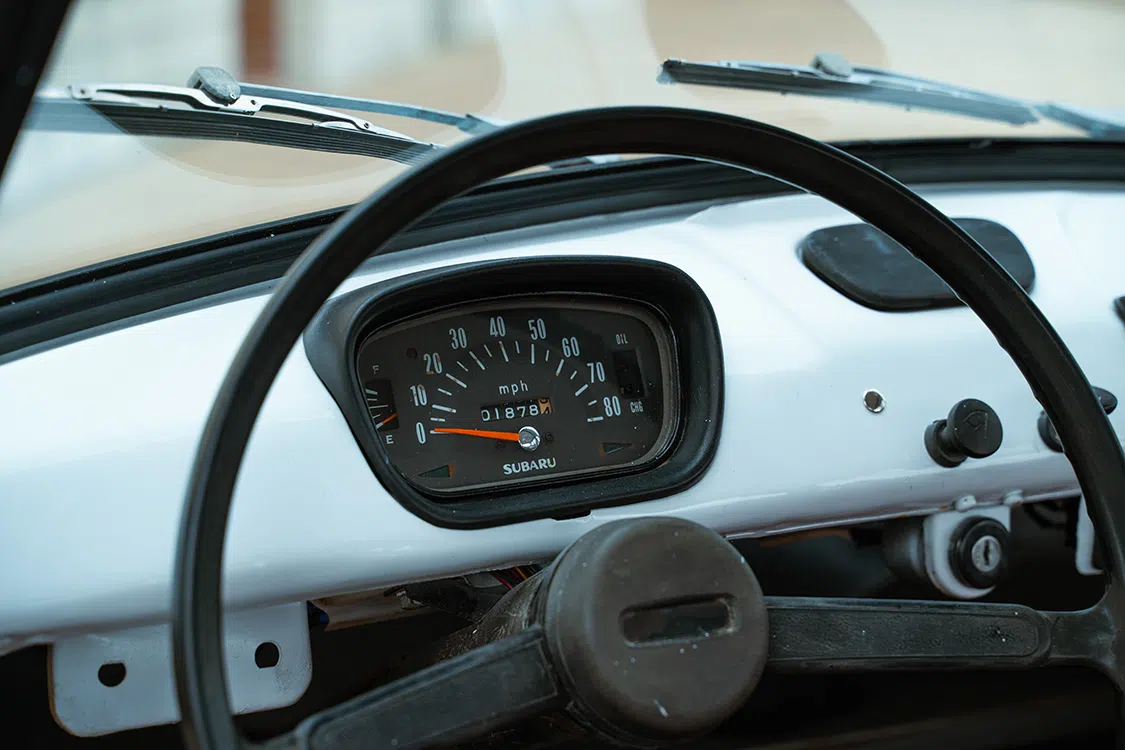
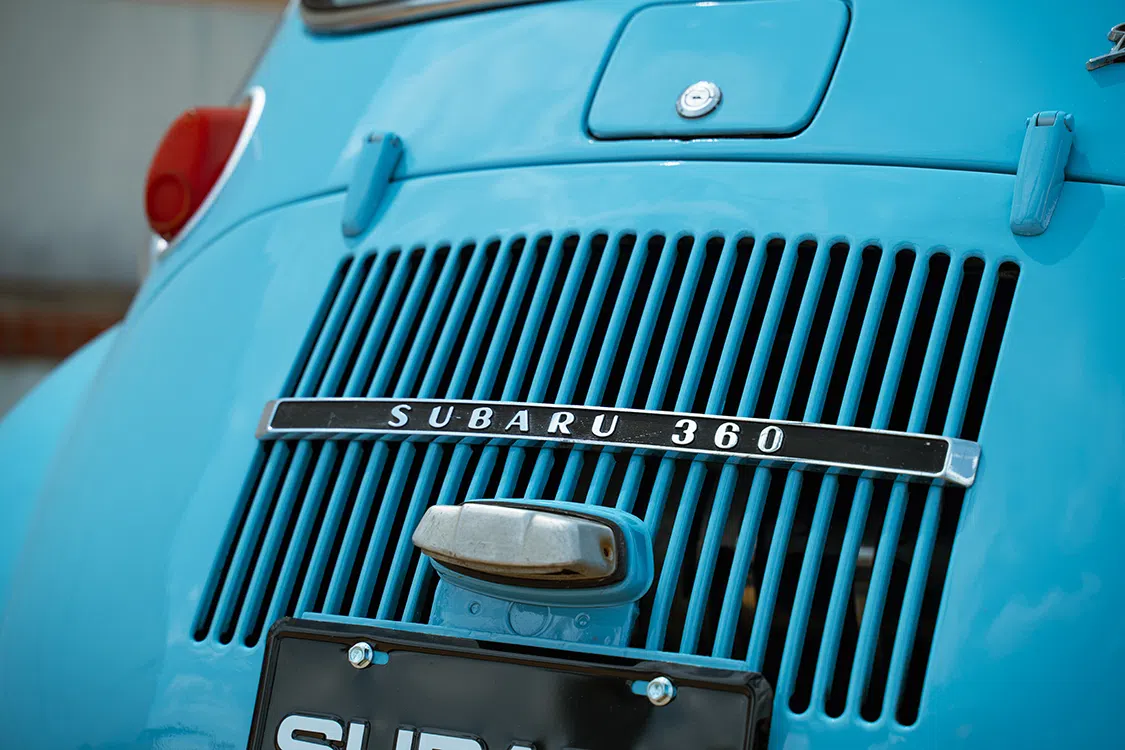
Reflecting on the build process, wiring emerged as the simplest task. Drawing from my familiarity with electrical systems and old cars, I managed the 36V motor circuit akin to a golf cart setup and the 12V circuit for lighting and wipers. Electrical complexities were mitigated by my upbringing and experience, streamlining this aspect of the conversion.
Although time was a formidable adversary, the journey was sustained by support from fellow Subaru 360 owners and invaluable assistance from my dad, Uncle Earl, and Dan Dearman.
While the present build might rely on outdated technology, the potential for modernization looms large. Visualizing the car with modern batteries, motors, and controls ignites excitement for a future upgrade. However, budget constraints temporarily temper such aspirations. The gradual evolution of EV technology will hopefully pave the way for more accessible upgrades, enabling projects like mine to reach new heights.
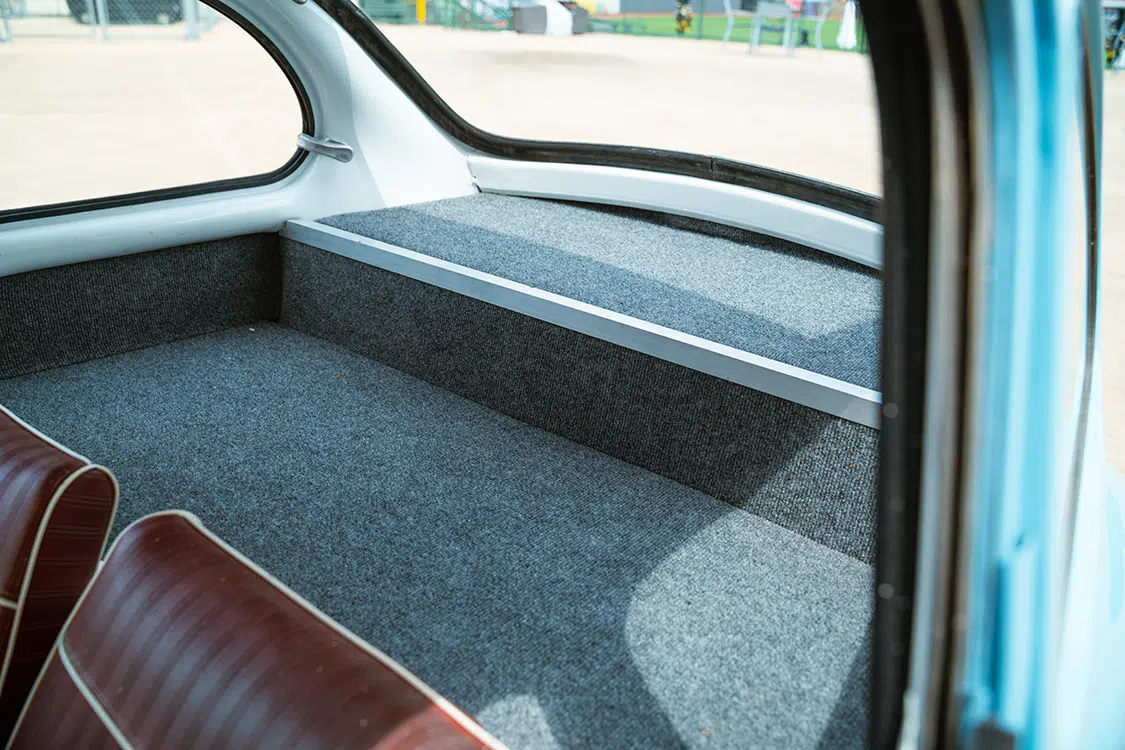
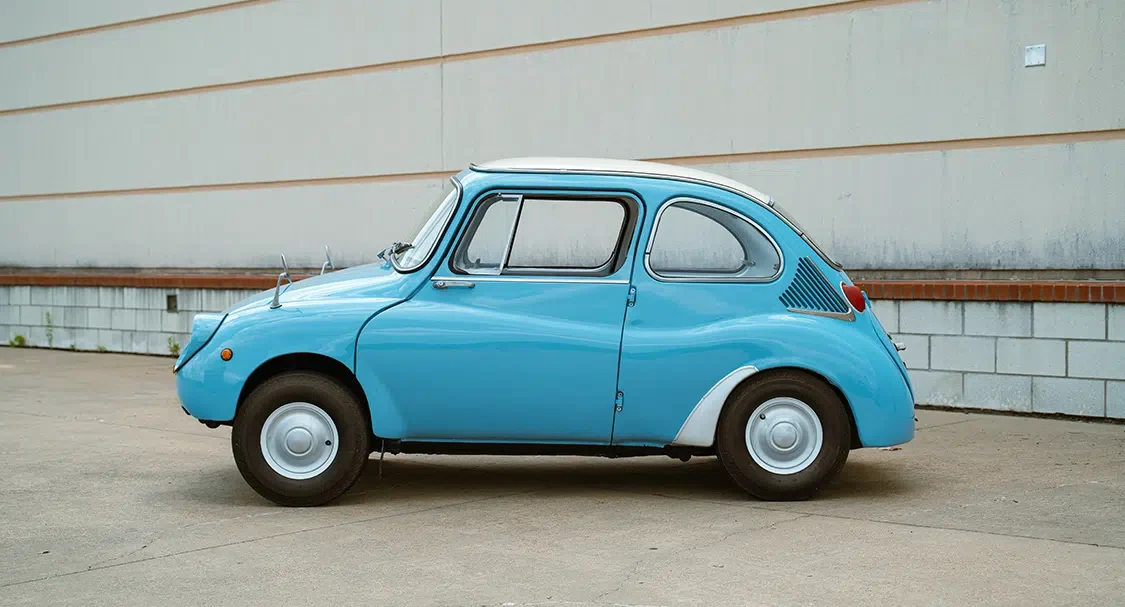
A fervent advocate of home-based innovation, I encourage others to embark on their own creative journeys. Whether transforming a dilapidated go-kart, rusted car, or forgotten dirt bike, the magic lies in making disparate elements harmonize. Drawing from personal experiences and the philosophy of building championed by figures like Stacy David, I champion the idea that the pursuit of a project need not be constrained by its shine or cost. Witnessing individuals derive pride from their creations, irrespective of their scale, is immensely rewarding.
Perseverance and embracing trial and error form the cornerstone of successful projects. Venturing beyond factory specifications demands a blend of courage and patience. The “Keep It Simple Stupid” approach guided my project, promoting a focus on fundamental simplicity. With each step taken, knowledge expands, and capabilities grow. Initiating with manageable undertakings paves the way for improvements and innovations over time.
Richard Rieger II
Motor & Drivetrain
Battery System & Charger
Chassis/Suspension
Wheels, Tires & Brakes
Body/Paint
Interior
Special Thanks
Richard Rieger, Earl Scallorn, Dan Dearman, Roddy Merritt, Zack Munger, Sylvia Rieger, David Rieger, Frances Rieger, Jackie Scallorn, Cody Russell
What factors contributed to the eventual resurgence of interest and appreciation for the Subaru 360 as a classic vehicle?
The resurgence in interest and appreciation for the Subaru 360 as a classic vehicle can be attributed to several key factors. Firstly, there is a growing sense of nostalgia in the automotive community, particularly for modern Japanese classics. As enthusiasts and collectors become more interested in the origins and early models of now-popular brands, vehicles like the Subaru 360 gain prominence. The 360 holds a special place as it marked the beginning of Subaru’s automotive journey, making it a cornerstone of the brand’s history. Moreover, the shift in perspective regarding the Subaru 360’s initial flaws plays a significant role. What were once seen as shortcomings are now viewed more affectionately as charming quirks of a young brand finding its footing in the automotive industry. This change in narrative transforms the car from a historical footnote to a symbol of humble beginnings, adding to its allure. Comparative rarity and increasing monetary value also contribute to the Subaru 360’s rising status. When placed alongside other microcars from its era, which now fetch high prices on the collector’s market, the Subaru 360 stands out as relatively undervalued. This perceived value for money sparks additional interest from collectors looking for unique pieces at lower prices. Additionally, the car’s portrayal in media and advertising subtly suggests a luxurious or niche appeal, potentially aligning it with elite hobbies and lifestyles, such as yachting. This association could drive its desirability among affluent collectors. In summary, a mix of historical significance, a reevaluation of its initial market reception, comparative affordability, and strategic positioning in the marketplace contribute to the Subaru 360’s resurgence as a beloved classic car.
How did the Subaru 360’s marketing and sales strategies evolve over time, and what impact did they have on its success?
The Subaru 360, initially launched, was marketed as an affordable and economical vehicle ideal for the masses. Over the years, its promotional strategies adapted to changing market demands and increasingly focused on highlighting its compact size and efficiency in urban environments. Despite these efforts, the car didn’t achieve significant success initially, largely due to its perceived underperformance and safety concerns compared to more modern vehicles of the time. It was only decades later that the Subaru 360 began to be appreciated for its historical significance and innovative design, earning it a nostalgic reverence which improved its reception and underscored its impact on the automotive industry. This belated recognition has shown how pivotal yet ahead of its time the Subaru 360 was in influencing small car design and urban mobility.
What were some of the challenges and criticisms faced by the Subaru 360, especially in relation to safety and power?
The Subaru 360 faced significant scrutiny and criticism when it was introduced to the American market, particularly concerning its safety features and engine performance. One major automotive publication reviewed the vehicle unfavorably, noting that it failed to meet the expectations for acceptable safety and performance standards on U.S. roadways. The review highlighted that the car’s maximum speed capabilities were substantially lower than its competitors: it struggled with sluggish acceleration, taking over 37 seconds to reach 50 mph, a stark contrast to similar era cars like the Volkswagen Beetle. In terms of safety, the vehicle’s structural integrity and design raised alarms. Its light weight allowed it to bypass certain federal safety regulations, raising concerns about the outcome of potential collisions with larger, heavier vehicles—a frightening prospect given the era’s vehicle sizes. Additionally, issues such as doors that could unexpectedly open when subjected to strong winds further underscored the car’s inadequate safety measures. Even the car’s braking and suspension systems, while somewhat effective, contributed problematic dynamics during normal driving conditions, such as excessive diving during braking. These issues combined to create a driving experience that could feel unstable and unsafe. The car’s maintenance and operation also posed challenges for American drivers. It required a specific type of two-stroke motor oil, which was not widely available, and demanded adherence to a stringent break-in protocol that capped speeds at 45 mph for the first 1200 miles. Moreover, the fuel efficiency was notably less than advertised, performing poorly in comparison to its stated mileage, particularly when driven under typical American driving conditions rather than the less demanding urban environments for which it was originally designed. Ultimately, the accumulation of these concerns led to recommendations for revising safety standards to eliminate loopholes that allowed such vehicles to be exempt from rigorous safety testing and regulations.
How did the Subaru 360’s design and engineering contribute to its performance and appeal?
The Subaru 360 was a significant model in automotive history, primarily because of its innovative design and engineering features that directly contributed to its performance and broad appeal. Introduced as the first mass-produced Kei car in Japan, its design was tailored to meet urban transportation needs economically. The car was exceptionally light, a critical factor in enhancing its efficiency and agility, thanks to the use of a thin steel monocoque chassis combined with a lightweight fiberglass roof. This reduced weight allowed the small, 356cc two-stroke twin engine, producing only 16 horsepower, to deliver sufficient performance for the vehicle’s urban role. Additionally, the engineering of the Subaru 360 included a sophisticated suspension system featuring four-corner independent torsion bars. This setup was not only advanced for its time but also crucial for improving the ride quality and handling of the car, making it more comfortable and safer to drive. The integration of finned brake drums attached directly to 10-inch steel wheels also pointed to an innovative approach to simplifying brake cooling and reducing unsprung weight—further boosting its performance capabilities. Thus, the Subaru 360’s design was structured not just for basic transportation but engineered to provide a remarkably balanced blend of performance, practicality, and affordability, which was instrumental in its success and popularity, helping it dominate the Kei car segment during its production years.
What were the unique features and specifications of the Subaru 360 that set it apart as a Kei car?
The Subaru 360, introduced as Subaru’s initial vehicle and a pioneer in Japan’s Kei car segment, was noted for its unique design tailored for affordability and urban utility. Originating in 1955 when restrictions limited Kei cars to engines of no more than 360 cubic centimeters, the Subaru 360 quickly became a staple in this category. Its design included several features that were quite advanced for its era and set it apart within the Kei car market. One of the notable aspects of the Subaru 360 was its lightweight construction, which was critical given its small engine size. The car utilized a thin steel monocoque chassis combined with a lightweight fiberglass roof, which significantly reduced its overall weight. This design choice not only enhanced fuel efficiency but also compensated for the car’s modest power output from its 356cc two-stroke vertical-twin engine, which produced only 16 horsepower. Furthermore, the Subaru 360 was equipped with a sophisticated suspension system, featuring independent torsion bar suspension on all four corners. This provided a smoother ride than what was typical in many other small cars of the time. Additionally, the vehicle was designed with unique finned brake drums that were mounted directly onto the 10-inch steel wheels, an arrangement that helped with both weight reduction and brake cooling. Overall, the Subaru 360 was an ingeniously engineered vehicle that combined cost-effectiveness, practical engineering, and innovative features to dominate the Kei car market from 1958 through 1971, with nearly 400,000 units sold. These characteristics ensured its success and enduring legacy within the automotive industry.
Share Link